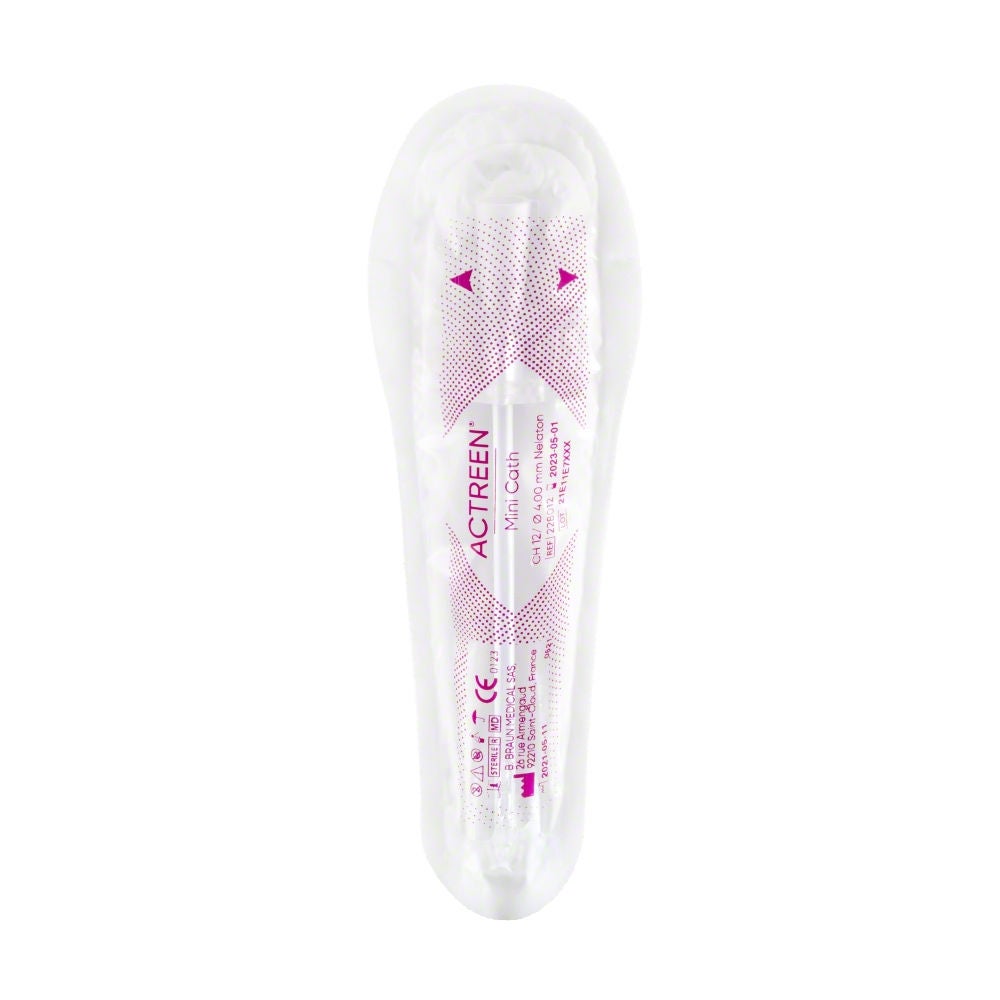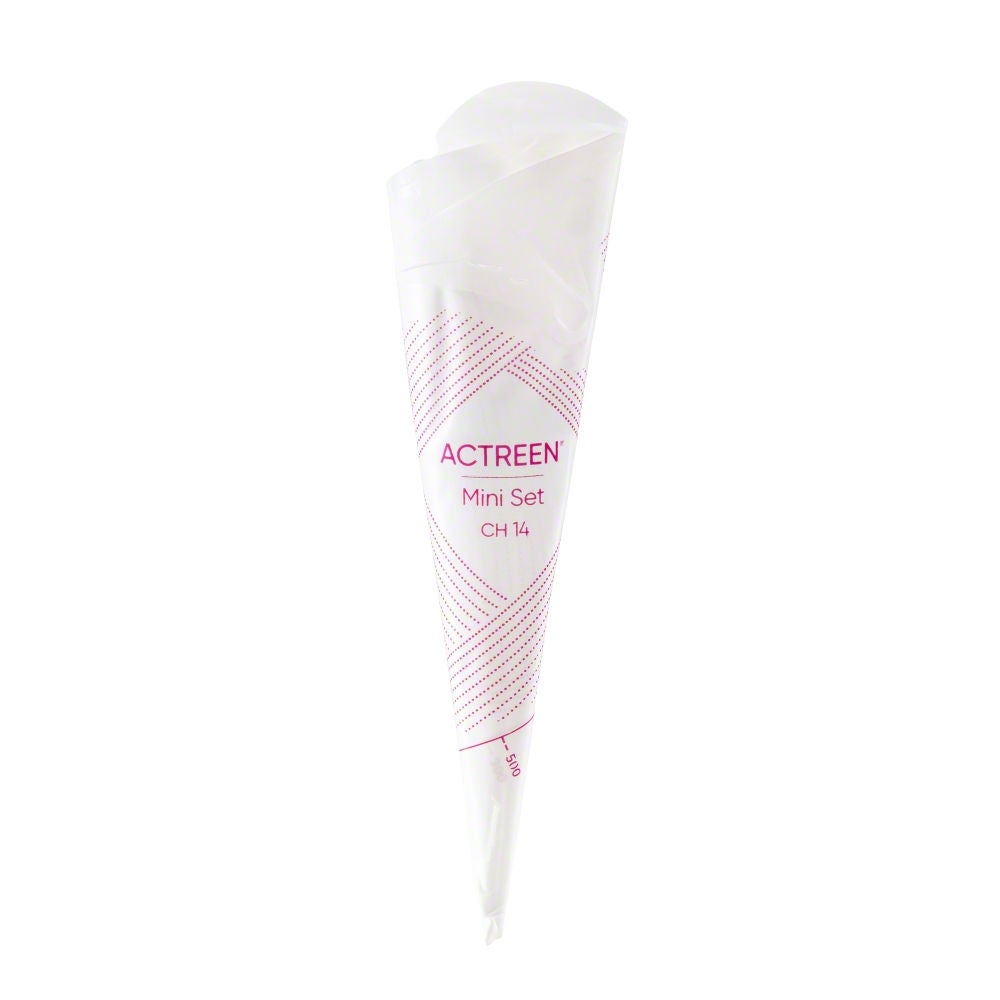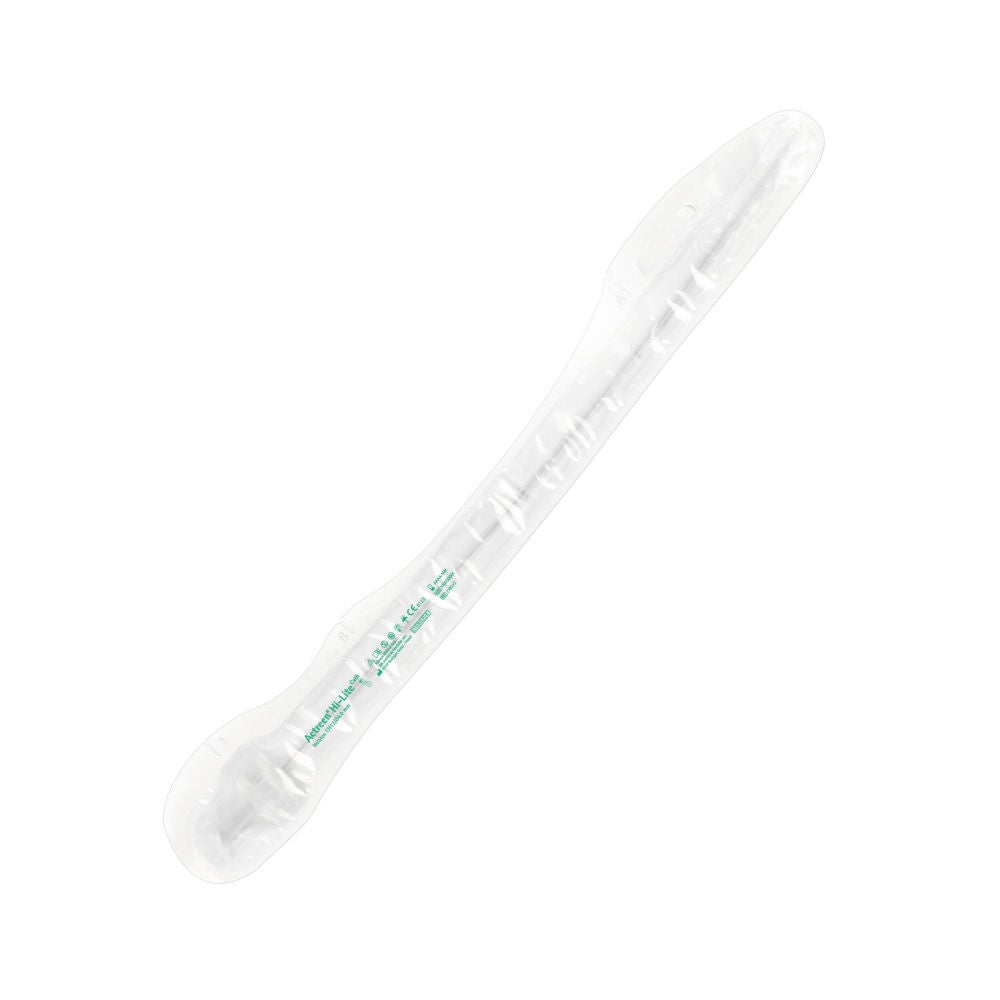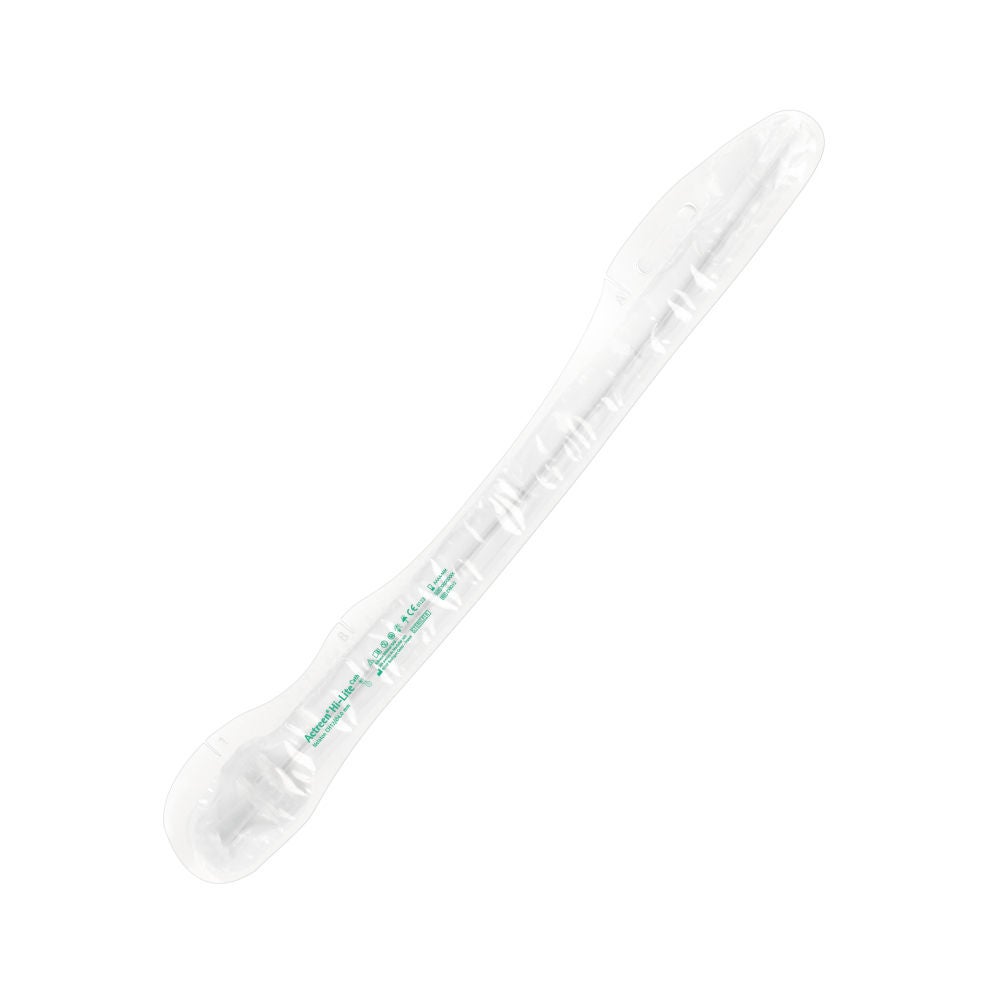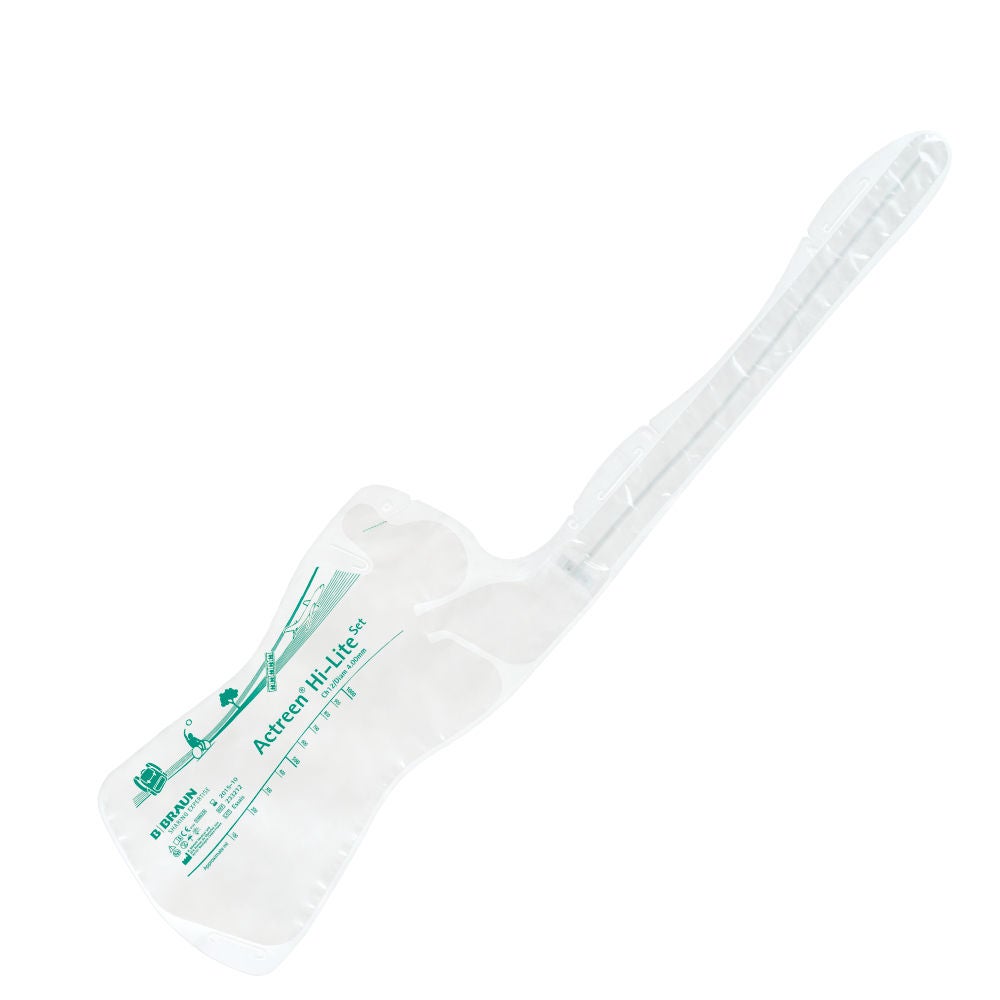You have successfully logged out.
Not registered yet?
Less waste and lower disposal costs
Intermittent catheters in use – a major source of waste1
Like many other medical products, catheters can only be used once. Every patient should place an intermittent catheter about five times a day,2-3 which is why just as many catheters end up in the waste every day. The same applies to the patient’s stay in your facility after surgery or for rehabilitation. Therefore, the amount of litter affects them personally as well as your facility.1 Waste is a challenge for all of us.4
Medical Professional
This information is meant for medical professionals only. Please confirm that you are a medical professional before accessing the information.
Confirm Yes, I am a health care professional. Cancel No, I am not a health care professional. *First part of example calculation of intermittent catheter usage of one spinal cord injury patient. Calculation basis: average use of 5 catheters per day, simplified calculation basis 4 weeks = one month.
*First part of example calculation of intermittent catheter usage of one spinal cord injury patient. Calculation basis: average use of 5 catheters per day, simplified calculation basis 4 weeks = one month.
Plastics are a threat to the oceans and to all living beings.4 There has never been as much plastic waste in circulation as there is today.5 The oceans have been particularly badly affected: Every two seconds, more than 1,000 kilograms of plastic lands in the water and causes further harm to the oceans.4-6
So worldwide, governments are striving to replace this material wherever possible. However, while it is often easy to change from a plastic to a paper bag, it can be difficult to exchange the materials in catheters for greener alternatives.
Activities of the EU
In 2016, the EU began to work on the Strategy on Plastics in the Circular Economy. This was followed by more directives concerning single-use plastics.The overall situation has become more critical during the past few years. Therefore, the European Union took an important step in prohibiting member states from selling certain plastic products. Various countries including France, Italy and the Netherlands have already started to ban single-use plastics.
This ban is aimed at products that are particularly often found as waste in the environment and for which there are alternatives on the market. Throughout Europe, single-use plastic will be banned at the latest from July 1, 2021.
Benefit from Actreen®
Actreen® considers your patients, the environment and your facility's budget
To better its waste ratio, Actreen® has already improved its recyclability: It is now made of TPO (thermoplastic polyolefin), which makes it a very light product on the market.7 It consists of only three parts and the product’s packaging is particularly easy to recycle.** A multifunctional packaging also contributes to environmental friendliness. Actreen® Hi-Lite Set for example generates 2.4 times less waste than the selected products of the main competitors.7
Choosing Actreen® for your patients may help in three different ways:
- You recommend a convenient catheter.8
- Your actions might be sustainable and cause less environmental pollution.7
- Your facility might generate less waste, which could mean lower disposal costs.1

Self-catherization with Actreen® is convenient. Your patients may benefit from convenient and easy catheterisation.8 This might have the advantage that your patients can focus on their rehabilitation instead of spending too much time on strenuous catheterization processes.

Actreen® is the eco alternative. Improving your waste management can be also a lot easier with Actreen®. Compared to competitor products, Actreen® has a great environmental performance in terms of packaging and its low weight is another eco-friendly feature.7 Using a catheter which produces less waste is better for the environment and waste management may become cheaper as well.1

Actreen® can be a great way to decrease your expenses. An assessment of waste generation rate data from around the world shows that about 0.5 kilos per bed and day is produced in hospitals, but this number varies enormously depending on the local context and the regional differences.9 In France, an average hospital bed generates about 3 kilos per day which adds up 1,000 kilograms per year. 25 percent of the waste caused by hospitals is plastic.10 This high amount of waste can be reduced. It might seem as if catheters are only a small part of this volume, but see for yourself how high the difference is.
Actreen® pouches
Extra service for your patients and the environment10
You want to give your patients as much scope as possible in terms of action. This is why we have delivered a free pouch with every package of Actreen®: Your patient can use this to carry their catheters safely with them – anywhere, anytime.
Now, we have gone a step further on our way towards making Actreen® greener and have improved the recyclability of the pouches, which are now made of paper. To keep them durable, a special PVC-coating ensures that they can be used everywhere, even in a wet environment.11 And the PVC reduction is high – in every version:
A win-win situation
Your choice makes the difference

So while your main focus is on helping people, why not help in other ways as well? Your choice can make a difference: By recommending Actreen®, you can do something positive for the environment and also for your facility's budget.
If you take factors such as patients’ well-being, ecological aspect, economical savings into account, Actreen® is a great choice. Now is the time to act for tomorrow!
Choose Actreen® – for your patients, your facility and the environment.
Let’s act now for tomorrow – with Actreen®!
** Please consider your local regulations for recycling.
[1] Sun AJ, Comiter CV, Elliott CS. The cost of a catheter: An environmental perspective on single use clean intermittent catheterization. Neurourol Urodyn. 2018 Sep;37(7):2204-2208. doi: 10.1002/nau.23562. Epub 2018 Aug 14. PMID: 30106190
[2] Groen J, Pannek J, Castro Diaz D, Del Popolo G, Gross T, Hamid R, Karsenty G, Kessler TM, Schneider M, 't Hoen L, Blok B. Summary of European Association of Urology (EAU) Guidelines on Neuro-Urology. Eur Urol. 2016 Feb;69(2):324-33. doi: 10.1016/j.eururo.2015.07.071. Epub 2015 Aug 22. PMID: 26304502.
[3] Woodbury MG, Hayes KC, Askes HK. Intermittent catheterization practices following spinal cord injury: a national survey. Can J Urol. 2008 Jun;15(3):4065-71. PMID: 18570710.
[4] Hardesty BD, Wilcox C. Eight million tonnes of plastic are going into the ocean each year. The Conversation. 2015 February 12. https://theconversation.com/eight-million-tonnes-of-plastic-are-going-into-the-ocean-each-year-37521#:~:text=Around%208%20million%20metric%20tonnes,of%20coastline%20(excluding%20Antarctica). Accessed May 23, 2023.
[5] Ritchie H, Roser M. Plastic Pollution. Our World in Data Sept 2018, updated April 2022. https://ourworldindata.org/plastic-pollution. Accessed May 5, 2023.
[6] Wearden G. More plastic than fish in the sea by 2050, says Ellen MacArthur. The Guardian. January 19, 2016. https://www.theguardian.com/business/2016/jan/19/more-plastic-than-fish-in-the-sea-by-2050-warns-ellen-macarthur. Accessed May 23, 2023.
[7] Bouton F. Qualitative environmental comparison between: Actreen® Hi Lite & Mini ranges and the main European competitor catheters. EVEA fabrique de solutions durables. July 2020. www.evea-conseil.com.
[8] Rew M, Lake H. A survey of short- and long-term pre-lubricated intermittent catheters. Br J Nurs. 2013 Oct 10-23;22(18):S12, S14-18. doi: 10.12968/bjon.2013.22.Sup18.S12. PMID: 24121768
[9] UN Environment Program: Healthcare waste: what to do with it? 09 April 2020. https://www.unep.org/news-and-stories/story/healthcare-waste-what-do-it. Accessed June 2, 2023
[10] Gibbens S. Can medical care existwithout plastic? National Geogrphic Newsletter 2019 Oct 9th. https://www.nationalgeographic.com/science/article/can-medical-care-exist-without-plastic. Accessed June 7, 2023
[11] Technical file B. Braun pouch: grammar of pvc per pouch. November 30, 2020
[12] Chartier-Kastler E, Chapple C, Schurch B, Saad M. A Real-world Data Analysis of Intermittent Catheterization, Showing the Impact of Prelubricated Versus Hydrophilic Catheter Use on the Occurrence of Symptoms Suggestive of Urinary Tract Infections. Eur Urol Open Sci. 2022 Mar 4;38:79-87. doi: 10.1016/j.euros.2022.02.008. PMID: 35495281; PMCID: PMC9051966.
Stay connected with My B. Braun
With your personalized account, your online experience will be easier, more comfortable and safe.
